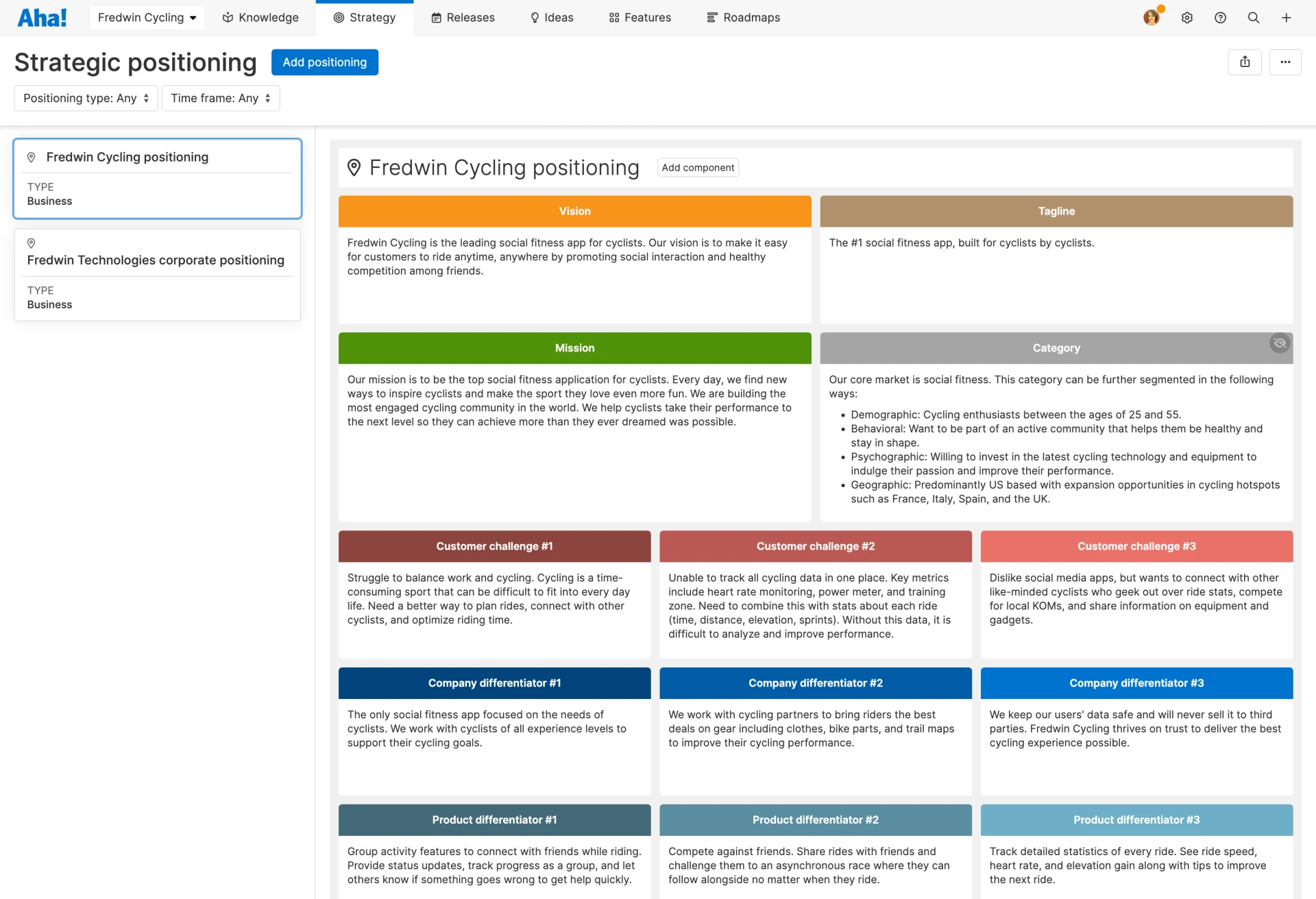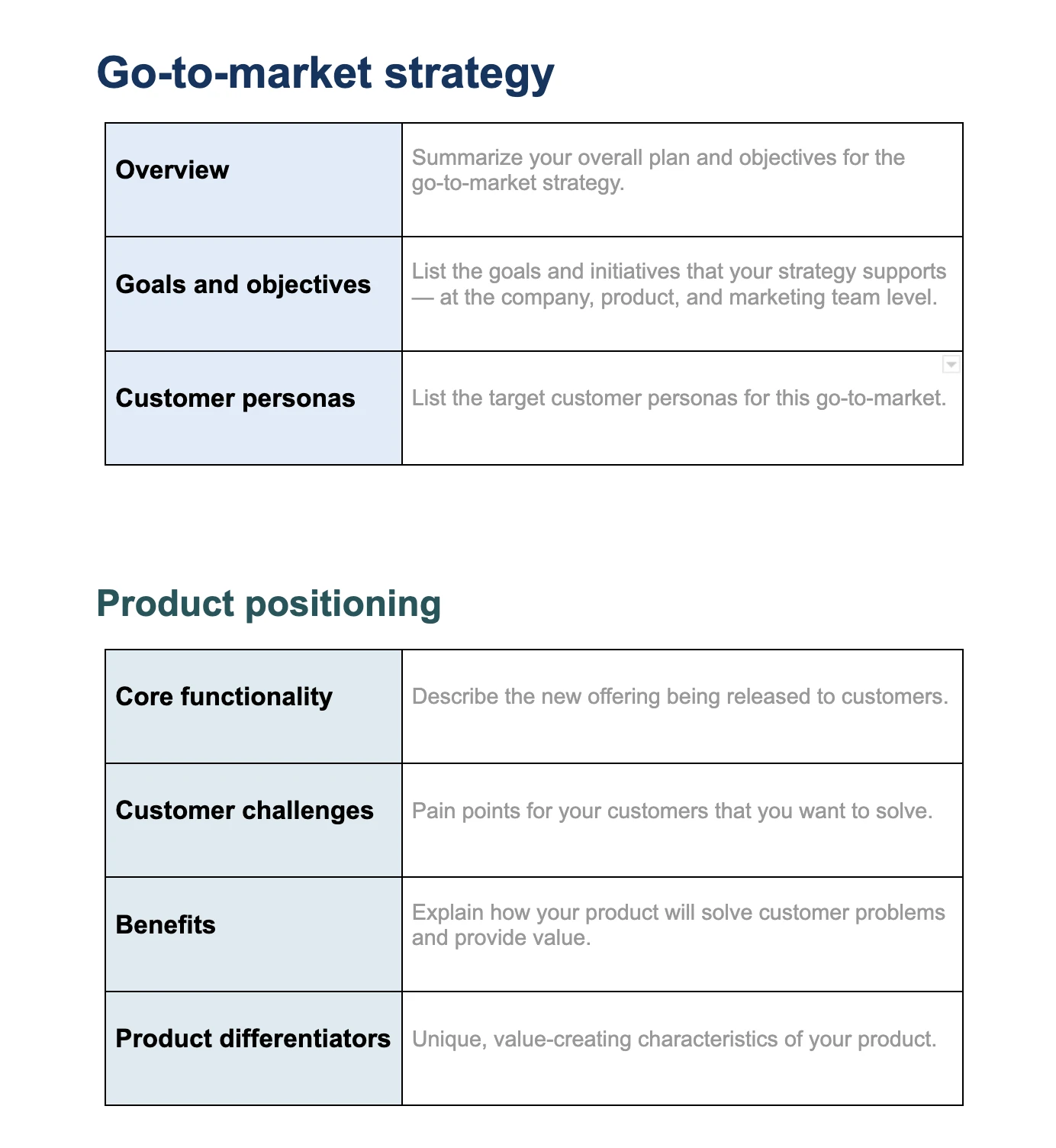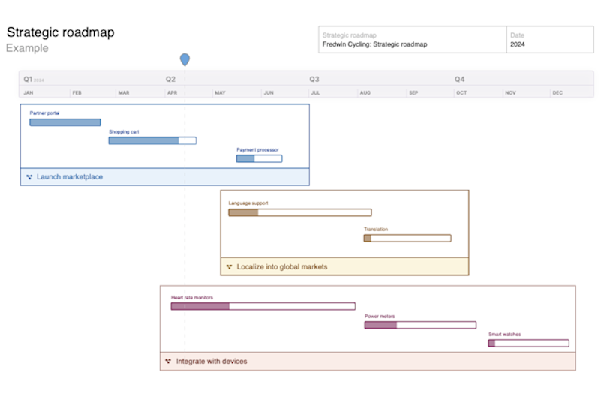What is a go-to-market strategy?
Learn how to create a go-to-market strategy that drives successful launches
Last updated: November 2025
Build an effective go-to-market (GTM) strategy to plan successful product launches, align teams, and communicate product value. Plus, get started with our free GTM strategy template. |
If you release a new product feature and no one hears about it — does it even make a difference? It takes a lot of hard work to ideate, plan, roadmap, build, and deliver new product functionality. But the value of what you have created is not always apparent to customers. It is up to you to deliver the gift.
This is where go-to-market strategy comes in. A go-to-market (GTM) strategy outlines how you plan to launch new experiences to customers, including how you will communicate the value of what is being released. The goal is to translate technical functionality into messaging that resonates with your audience — informed by the overall product strategy.
Product development teams craft go-to-market strategies to stir up awareness and excitement around all types of launches — for brand new products, enhancements to existing ones, and expansions into new markets. GTM strategy can also encompass long- or short-term plans. You might review GTM strategy annually to examine how your overall approach is performing and get aligned on major product plans for the year. In the short term, go-to-market strategy focuses on the individual releases happening on a regular cadence.
In this guide, we will cover the "who", "why", and "what" behind excellent go-to-market strategies (plus, we will throw in a free template to help you get started). Keep reading or jump ahead here:
Set strategy and launch brilliant products with Aha! software. Sign up for a trial.
Who owns the go-to-market strategy?
Years ago, go-to-market activities were distinctly separated by function. Product management set the product direction, engineering built it, marketing did outreach, and sales closed the deal. It was this way for decades. But in today's world of product-led growth, product teams are ditching rigid siloes — instead embracing a much more cross-functional approach.
Now, go-to-market strategy ownership is shared among product marketing, product management, and engineering at many tech companies. Typically a product marketing point person will drive the effort and coordinate with the rest of the core product team. It is also best-practice to bring in sales and support team members for alignment on messaging, pricing, customer training, and even as a channel for getting the word out about new features.
This shared-ownership model is common for established businesses. But at small and early-stage companies without dedicated product marketing teams, GTM strategy is often wrapped into the overall marketing strategy and spearheaded by the broader marketing team.
Related:
Why is go-to-market strategy important?
It is always exciting to deliver new product value to customers. But it can also feel like a lot of pressure. Between the ups and downs, go-to-market strategy keeps you focused on the end goal by supporting you in three main areas — alignment, customer experience, and direction.
Alignment GTM strategy clues the rest of the organization into your plans for delivering something new to your target audience. It offers a single source of truth — so everyone understands how to talk about the new functionality, what the benefits are, and who to share the news with. When everyone is aligned on your GTM strategy, it provides a stronger message and a more cohesive experience for customers.
Customer experience Go-to-market strategy is a key component of your customer experience. The way that people are introduced to your product can help shape their overall perception of your offering. For prospective customers, this means educating folks about what you are building and getting them excited. For existing customers, a solid GTM strategy demonstrates the continuous value you provide.
Direction Creating a GTM strategy is only the first step in the overall go-to-market process — it sets the direction for the launch activities that follow (like, building a go-to-market roadmap and writing promotional content, for example). Your GTM strategy is your guide to planning the most impactful outreach for your target audience. It can also help you evaluate the effectiveness of your approach post-launch.
Beyond this, successful go-to-market strategies come with a number of benefits:
Increased awareness of your company and product
New customer growth
Improved engagement or retention from existing customers
Higher product usage
Internal recognition for your product team's efforts
Related:
What does a go-to-market strategy include?
A solid GTM strategy details everything from impact to outreach, including the components in the table below:
Overview | Summarize your overall plan and objectives for the go-to-market. |
Goals and initiatives | List the goals and initiatives that your strategy supports — at the company, product, and marketing team level. |
Customer personas | Select which persona(s) are the target audience for the launch to help craft your positioning and messaging. |
Positioning and messaging | Explain the key benefits of the new functionality and the customer problems it addresses. Your positioning should also outline any product differentiators. |
Pricing | Determine whether the new functionality will be included in current pricing plans or an add-on. For brand new product launches, consider what price to set for launch. |
Distribution channels | List which channels you will use to get the word out and how. GTM channels often include blog posts, email, social media, how-to articles, in-app notifications, and press releases. |

An example of how you can capture product positioning in Aha! software
How to create a go-to-market strategy
Planning how you will bring products to market requires high-level strategic thinking and cross-functional agreement on your direction. If you are thinking broadly about creating or transforming your go-to-market approach, try asking yourself these questions to get the ideas flowing:
Who buys our product today?
What problem does our product solve for them?
Where do customers currently go to learn about our product?
What steps do they take to purchase our product?
Why do they choose our product over a competitor's?
What challenges do users experience with our existing product?
What channels can we use to market this product to new potential customers?
Then, follow these steps to see your go-to-market strategy take shape for each launch:
1. Identify a GTM-worthy release: Not every feature requires its own go-to-market launch — especially if the functionality is low-impact or expected. Focus on enhancements that are high-value or give you a competitive edge. Discuss upcoming releases with your product team to decide on ones that make sense.
2. Draft the positioning: Summarize the core functionality, the challenges it addresses, and messaging for customers. You should also note which goals, initiatives, and personas you are targeting with this launch. (Need ideas? Try one of our product positioning templates.)
3. Determine distribution: Plan how you will get the word out. You might rely on a usual mix of communication channels or consider new ones depending on the launch. Document your approach for each channel.
4. Put it all together: Combine your positioning, distribution plan, and any other relevant research or context into an abstract.
5. Host a kickoff call: Discuss and refine your go-to-market strategy with your product team. Be sure to also get input from sales, support, and leadership.
With your go-to-market strategy in hand, the next step is to bring it to life. That means drafting content for each communication channel, creating a go-to-market roadmap, and prepping for launch day.
Related:
Go-to-market strategy template
Setting go-to-market strategy takes time and thought — this free template makes things a little simpler. Download our go-to-market strategy template to get everything organized without starting from scratch.
If you want to fully optimize your go-to-market approach, try Aha! Roadmaps to define your strategy. With Aha! Roadmaps you can capture positioning, personas, and more — then seamlessly connect to your go-to-market roadmap for a chaos-free launch.
Popular templates:
FAQs about go-to-market strategy
A go-to-market strategy is a plan for how you will introduce new products, features, or experiences to customers. It defines how you communicate value, reach your target audience, and ensure that your launch activities align with your overall product and business goals. In essence, GTM strategy connects what you build to how you deliver it.
Product strategy defines what you are building and why. It outlines how a product will support company strategy and business goals. GTM strategy focuses on how you bring that product to market, communicate its value, and drive adoption. In short, product strategy guides creation, while GTM strategy guides delivery and awareness.
Ownership of GTM strategy is typically shared across teams. Product marketing often leads the effort — collaborating closely with product management, engineering, sales, and customer support. This cross-functional approach ensures everyone is aligned on messaging, positioning, pricing, and customer outreach. In smaller organizations without a dedicated product marketing function, GTM efforts may be led by the broader marketing team.
You should revisit your GTM strategy regularly. Many companies review it annually to align on major product plans, while short-term GTM strategies are created for individual releases. Regular updates ensure messaging, channels, and positioning remain relevant as the market and customer needs evolve.



